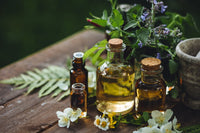The Scented Signature
There’s something quietly powerful about a fragrance. It lingers, evokes memories, and transforms a moment into a mood. Fragrance oils—whether worn, diffused, or swirled into a candle—are more than accents. They’re signatures.
But selecting the right one isn’t just about sniffing. It’s a mix of intuition and intention. The perfect oil feels right—it reflects who you are, how you live, and the ambiance you crave.
This guide will help you choose a fragrance oil that fits your personality and purpose—from scent structure to olfactory identity—so you can curate a fragrance that’s wholly you.
Discovering Your Scent Personality
Your scent preferences are emotional fingerprints. The zing of citrus might recall summers by the sea. Sandalwood may stir sweater-weather nostalgia. Fragrance is personal.
Start with what you love. Do you go for crisp and clean or deep and mysterious? Delicate florals or comforting vanillas?
If you’re unsure, try discovery kits or digital scent quizzes. Think of it as your scent horoscope—about resonance, not rules.
Understanding what moves you is the first step to finding a fragrance that feels like home.
Scent Meets Soul: Personality & Mood Matching
Matching Fragrance expresses who you are—and how you want the world to feel you. A single note can whisper confidence or calm.
Scent archetypes:
• The Bold: Ambers, oud, tobacco, spice.
• The Romantic: Rose, jasmine, tuberose.
• The Serene: Lavender, chamomile, aquatic notes.
• The Sophisticated: Musk, sandalwood, white tea.
Match your mood too. Feeling grounded? Go woody. Need energy? Try citrus. Fragrance is emotional styling—use it to set the tone.
Purposeful Perfumery: Match Scent to Application
Not all fragrance oils are created equal. The formula that sings on your skin might flop in a candle—or worse, irritate. Matching scent to purpose is non-negotiable.
- Body Oils: These need to be skin-safe—free from harsh additives, balanced for pH, and diluted properly. Look for cosmetic-grade or IFRA-compliant oils.
- Candles: You need oils with strong scent throw and stability when heated. Some notes (like citrus) can vanish quickly unless expertly blended.
- Diffusers: These benefit from mid-to-high volatility oils that bloom in the air without becoming cloying.
Before using any oil, read the label. Check for usage guidelines, allergens, and application limits. A beautiful scent isn’t worth discomfort—or damage.
Bottom line? The perfect fragrance doesn’t just smell good—it fits the job you’re giving it.
Decode the DNA: Fragrance Structure 101
Fragrances unfold in chapters—top, middle, base:
• Top: Citrus, herbs—light and quick to fade.
• Middle: Lavender, rose, spice—core of the scent.
• Base: Wood, amber, musk—rich, long-lasting.

Body chemistry and environment affect scent evolution. A fragrance should be judged by its finish as much as its start.
Sample Before You Scent

Commitment comes after testing. Sampling ensures a scent suits your skin and space.
How to sample:
• Use tester kits.
• Wear it a full day.
• Test in your environment—light a candle, run a diffuser, then assess.
Sampling is curiosity in action—and the key to a confident choice.
Natural vs. Synthetic Oils
Fragrance oils can be natural or synthetic—each with pros and cons.
Natural oils come from plants and offer authenticity, but they’re less stable and more allergenic.
Synthetics are lab-created, consistent, and longer-lasting. Some are more sustainable but may contain additives.
Choose based on use:
• Naturals for personal wear, but use a diluted form.
• Synthetics for candles or diffusers.
• Look for cruelty-free and phthalate-free options.
Quality Control: What to Look for in a Supplier
In the world of fragrance oils, trust is everything. Here’s how to separate scent sorcery from snake oil.
Look for:
- Ingredient transparency: Reputable brands clearly list fragrance components and allergens. If the ingredient list is vague or missing? Skip it.
- Testing & safety standards: Skin-safe, IFRA-compliant, cruelty-free, non-toxic—these aren’t just buzzwords, they’re non-negotiables.
- Customer reviews: The collective nose never lies. Scan for consistent praise on longevity, accuracy, and packaging integrity.
Red flags?
- No sample options.
- Overuse of vague marketing language (“clean” without explanation).
- No return policy or safety certifications.
Green lights?
- Detailed scent descriptions, top/middle/base note breakdowns.
- Responsiveness to customer inquiries.
- Educational resources that help you buy better.
Choose your supplier like you choose your signature scent—with discernment, curiosity, and a touch of flair.
Allergies & Sensitivities: Safety First
Even the most divine scent can cause irritation if your skin doesn’t love it back.
Watch for common triggers, like:
- Citronellol
- Limonene
- Geraniol
- Synthetic musks
Even some naturals—like citrus or cinnamon oils—can be surprisingly harsh. So, if you're sensitive, look for hypoallergenic or fragrance-free alternatives. These often swap out known irritants and go light on concentration—ideal for delicate skin or high-contact products like body oils.
Non-negotiable:
Always patch test.
Apply a small amount to your inner wrist or elbow. Wait 24–48 hours. No redness, bumps, or itch? You're likely good to go.
Your skin is your largest organ. Treat it with the same curiosity and care as your nose.
Final Thoughts: Scent with Intention
Choosing the perfect fragrance oil isn’t about chasing trends—it’s about finding the scent that mirrors you.
Whether you're drawn to soft florals or bold spices, what matters most is intentionality: knowing what you love, how you’ll use it, and how your body (or space) responds.
Remember:
- Let personality guide your palette.
- Prioritize quality, safety, and testing.
- Let your scent story evolve as you do.
Because in the end, the best fragrance doesn’t just smell good—it feels like home.
FAQs: Choosing Your Signature Fragrance Oil
1. How do I know if a fragrance oil is safe for my skin?
Check for labels like skin-safe, cosmetic-grade, or IFRA-compliant. Always patch test a small area (like your inner wrist or elbow) and wait 24–48 hours for any signs of irritation.
2. What’s the difference between essential oils and fragrance oils?
Essential oils are natural extracts from plants, while fragrance oils can be synthetic, natural, or a blend. Fragrance oils offer more scent variety and consistency but may lack therapeutic benefits.
3. Can I use the same fragrance oil for my body and home?
Not always. Oils formulated for candles or diffusers might not be safe for skin. Make sure the oil matches the intended use—read the label and supplier recommendations carefully.
4. How do I choose a scent that matches my personality?
Start by thinking about past fragrances you’ve loved and the moods they evoke. If you’re bold, try oud or amber. If you’re romantic, go floral. Discovery kits or scent quizzes can help clarify your preferences.
5. Do fragrance oils expire or go bad?
Yes, especially natural oils. Most last 1–2 years if stored in a cool, dark place with the cap tightly sealed. If the scent changes drastically or smells rancid, it’s time to replace it.








